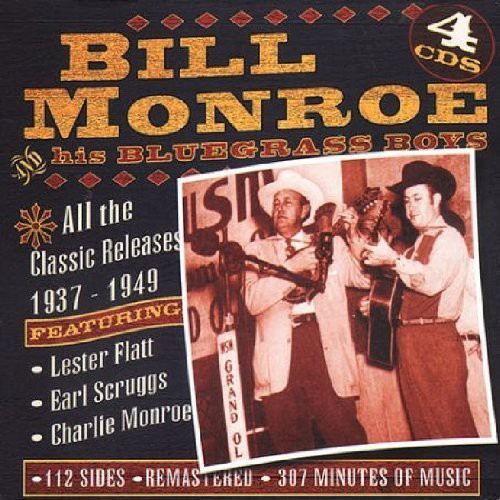1
/
of
1
FYE
Bill Monroe - All the Classic Releases 1937-1949
Bill Monroe - All the Classic Releases 1937-1949
Regular price
$32.99
Regular price
Sale price
$32.99
Unit price
/
per
Shipping calculated at checkout.
Usually ships within 1 to 2 weeks.
Couldn't load pickup availability
SKU:JSP7712.2
Share
Born in 1911 on a Kentucky farm, Bill Monroe was the youngest of eight. The three youngest brothers formed a trio, Birch on fiddle, Charlie on guitar and Bill on mandolin. Bill made quick progress. He quit school aged 11. By 14 he was a full time heavy wagon driver. And he was getting experience in local dance bands. In 1927, Birch and Charlie left for Detroit to find work. They made extra cash by playing for fellow southerners. In 1929 they got Bill a job with their company. In 1932, the brothers joined the WLS Barn Dance as dancers. They revealed their musical skills and were soon radio regulars. In 1933, Charlie was offered a spot on the Texas Crystals radio show, broadcast from Shenandoah, Iowa. Bill went too. Despite it's success, Texas Crystals axed the show in 1936. The Monroes moved to Crazy Crystals. A hectic round of radio and dances ensued. They were signed to Victor's Bluebird label. The ten sides recorded at their first session were probably part of their radio set - nearly all were 'one-take' cuts. Of the ten sides, What Would You Give In Exchange For Your Soul was a huge hit. Regular recording dates became part of the schedule. Monroe product was released every four weeks. But in 1937 Bill and Charlie, mutually hostile in spite of their success, split. Bill gained a slot on a small radio station in North Carolina. The band he created - the Bluegrass Boys - generated a buzz on radio and at dances. Finally Bluebird signed him. The records he made justified their confidence. The wartime recording ban didn't hinder Bill's fame - he made regular Opry appearances - and in 1945 he was back in the studio. The 1946 and 1947 line-ups, with Flatt & Scruggs in the band, are exceptional. In the 1960s, after a slip in popularity, the folk revival helped him re-establish his leading status. During his life he celebrated 50 years on the Grand Ole Opry, performed at the White House and worked almost to the last. He died in 1996.



